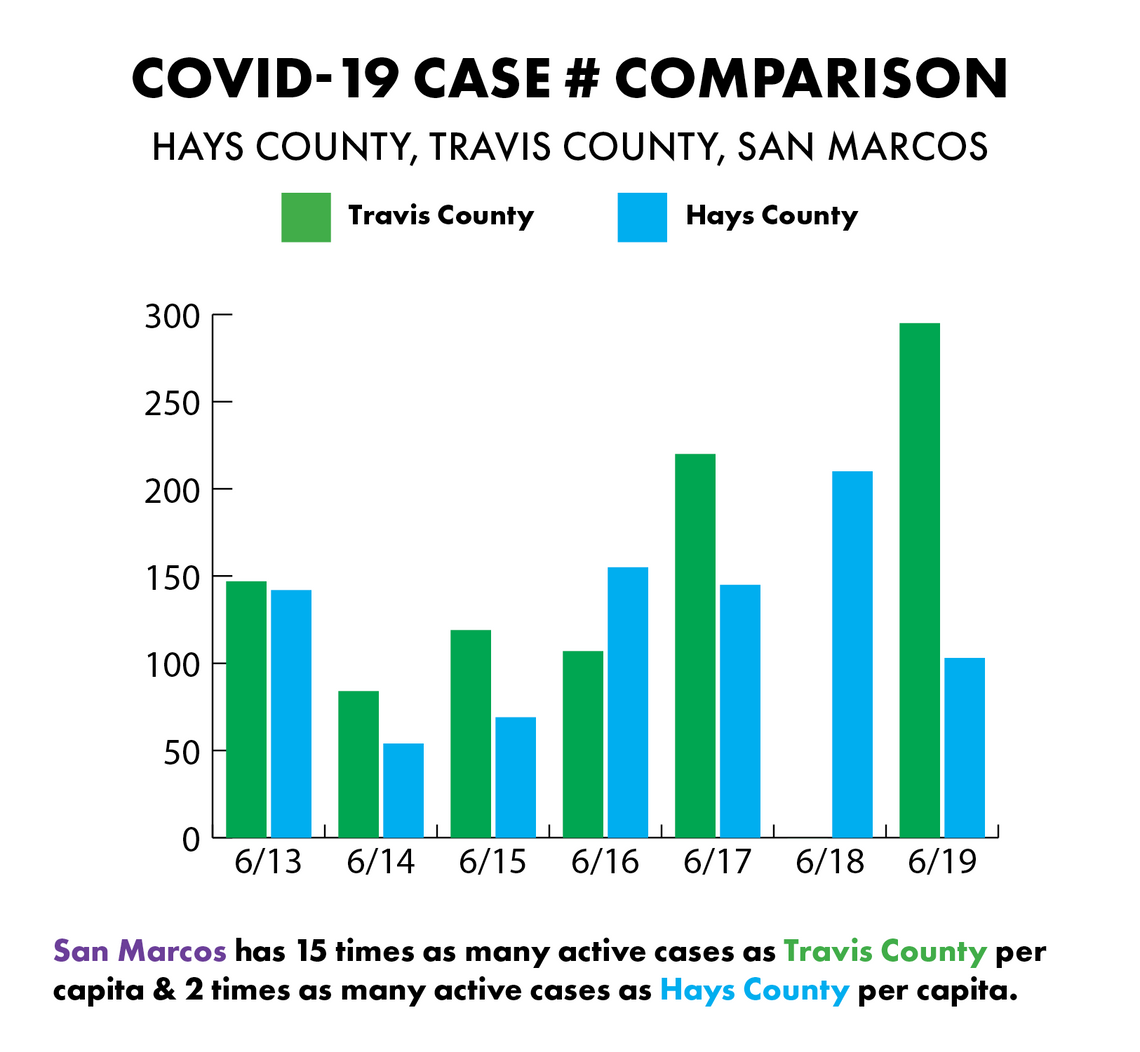Hays County is more than a week into its second wave of COVID-19 and its new case counts have been rivaling it's much more densely populated neighbor.
Hays County now has more active cases than Travis County as of June 19; 1,157 for Hays, and 1,066 for Travis. Considering that Travis County has a population five times the size of Hays, at 1.27 million compared to 230 thousand, the comparison is even more stark.
Roughly one out of every 200 residents in Hays County currently has the virus.
PLEASE LOG IN FOR PREMIUM CONTENT. Our website requires visitors to log in to view the best local news.
Not yet a subscriber? Subscribe today!







